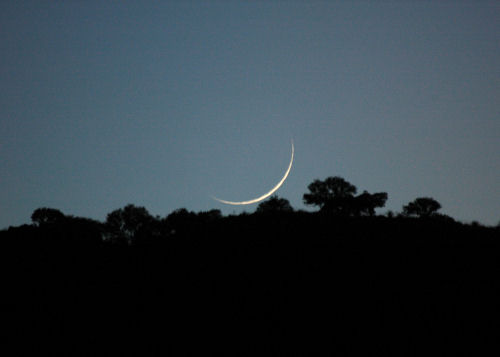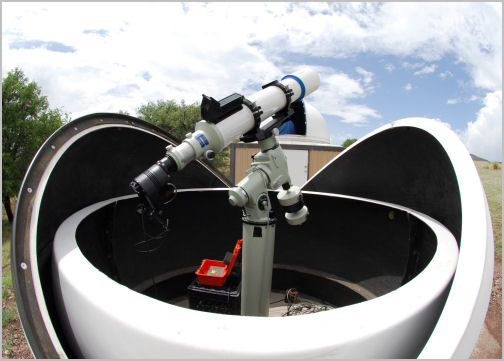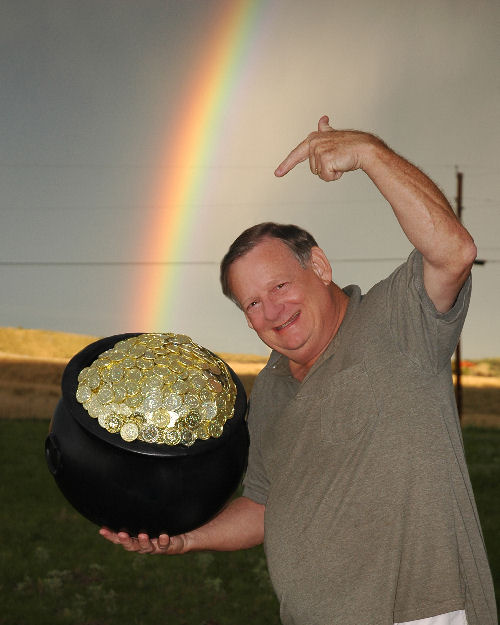Featured Site of the Month:
Home Observatories and Astrophotography — Page ThreeLoyd Overcash
The first "scientific based" images of a solar system object arrived with the invention of the telescope in the early 1600s. These were illustrations of the moon rendered via the medium of pen and paper by Thomas Harriot and Galileo Galilei; not until the advent of Louis Daguerre's camera of 1839 would that change. — K. Pinkela, Art & Artists of the Universe The Artistic Science of Renderings and Images
Astrophotography As astronomy and photography merged, they revolutionized the pursuit of serious scientific research, eventually changing the hobby of amateur astronomy and fostering a growth of citizen supported science that was to become more than just a casual pastime. It began when the first astrophoto came into being, a photograph of the lunar surface taken in 1840 by John William Draper, who later presented his image to the Lyceum of Natural History in the City of New York, today known as the New York Academy of Sciences. In 1880, his son, Henry Draper, became the first person to photograph the Orion Nebula, which was essentially the first deep sky astrophoto. The science of photographing space then saw some of its greatest early work through the pioneering photographs of American astronomer E.E. Barnard, made at the Lick Observatory in the years 1889—1895.
As astronomy and photography merged, they revolutionized the pursuit of serious scientific research, eventually changing the hobby of amateur astronomy and fostering a growth of citizen supported science that was to become more than just a casual pastime. It began when the first astrophoto came into being, a photograph of the lunar surface taken in 1840 by John William Draper, who later presented his image to the Lyceum of Natural History in the City of New York, today known as the New York Academy of Sciences. In 1880, his son, Henry Draper, became the first person to photograph the Orion Nebula, which was essentially the first deep sky astrophoto. The science of photographing space then saw some of its greatest early work through the pioneering photographs of American astronomer E.E. Barnard, made at the Lick Observatory in the years 1889—1895.In our modern era, it has become one of the fastest growing areas of science and art, a popular pursuit amongst photographers, amateur astronomers, students, engineers, artists, and hobbyists of all ages and backgrounds. It is a fusion of technologies we call astrophotography, and its legacy is felt far and wide, from the halls of scientific disciplines to serious astronomical research; the 2004 discovery of McNeil's Nebula by its namesake Jay McNeil (using his CCD camera and 3-inch refractor) being just one of many cases in point. Today, commercial astrophotography equipment is easy to find, and modern digital cameras are increasing in popularity due to lower cost and ease of use. Yet, it is not a pursuit to be taken too lightly as skill and technique are extremely important, and the hobby can become a life-time passion or short-term frustration. Seen above left is Loyd's beautiful image of a fingernail moon, seen above the foreground ridge line and trees of his DeerRidge observatory, where the Sky is Deeper and the Stars are Brighter. [10] The Observatory at DeerRidge
Shown below is Loyd's pride and joy and his most recent picture of the 14½-inch RCOS Ritchey-Chretien with Ion Milled optics he houses in the larger of his two observatories. This is a much more advanced setup that requires plenty of experience in the hobby and not one that the beginner should take lightly; it is a good example of what we mean when we speak of the need for skill and technique, an extremely important component of this type of equipment and the resulting astrophotography work that can be achieved with it.

Though interest in the hobby of amateur astronomy was very much present in the early 1900s, its developement only really started in 1947. As noted by Thomas R. Williams in his thesis while at Rice University: However, it was not until 1947, when the Association of Lunar and Planetary Observers (ALPO) formed, that another large segment of amateur astronomers found a home for their interests. A second mode of national organization succeeded at mid- century and grew to include most avocational astronomers. Between then and now, the hobby has exploded beyond imagination, the growth attributable to the technological achievements of the 20th century in electronics and computers and their resulting affordability as well as to the plethora of websites that now exist on the subject. Today it has developed a multitude of divisions and hobbies that include observing groups, public participation in programs like SETI and Near-Earth Object surveys, amateur discoveries, astrophotography, sketching and astroart, website forums and dicussion groups, personal picture of the day and hobby sites, educational topics, instrument reviews and many others—all of which are given life and support through the efforts and work of amateur astronomers worldwide, many who are working alone. [11]

Shown above is the open 7-foot Astrohaven clam shell that houses Loyd's 5-inch Takahashi Refractor with its mounted SBIG ST-10XME. We find them smaller and fainter, in constantly increasing numbers, and we know that we are reaching into space, farther and farther, until, with the faintest nebulae that can be detected with the greatest telescopes, we arrive at the frontier of the known universe. — Edwin Powell Hubble

Above is another look at Loyd's home observatory and domes. For my confirmation, I didn't get a watch and my first pair of long pants, like most Lutheran boys. I got a telescope. My mother thought it would make the best gift. — Werner von Braun
Final Image — Jackpot!

But you'll just have to find it on your own; he's not giving out the coordinates!
MANY THANKS TO LOYD OVERCASH AND ALL HIS HARD WORK,
ESPECIALLY FOR HIS DESIRE TO SHARE WITH US HIS LOVE OF THE HOBBY
Without his help and efforts, this piece could not have been written — Thank You Loyd!
To view all of Loyd's images or to view those presented here at a higher resolution then drop by his skyshooter website.